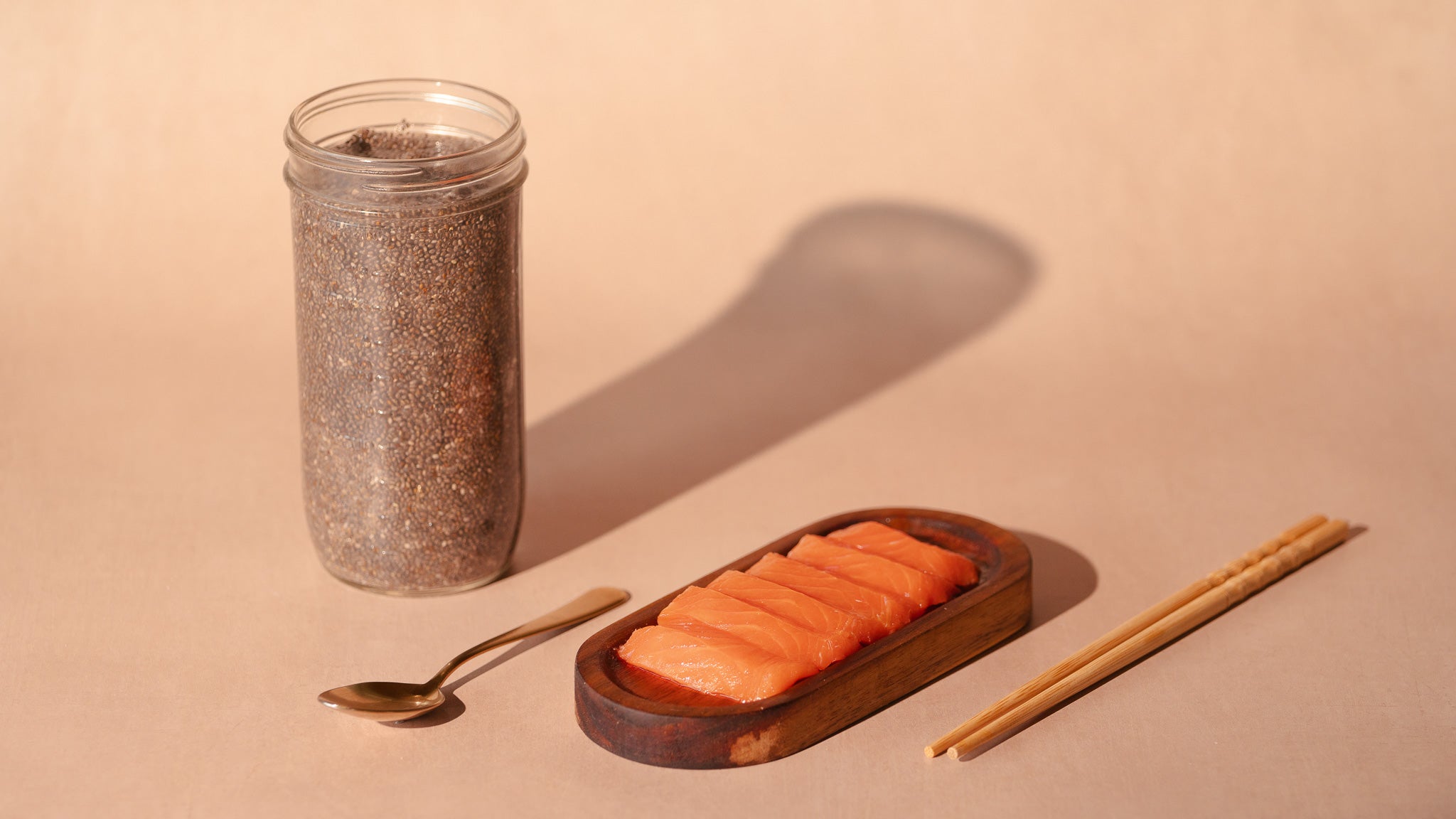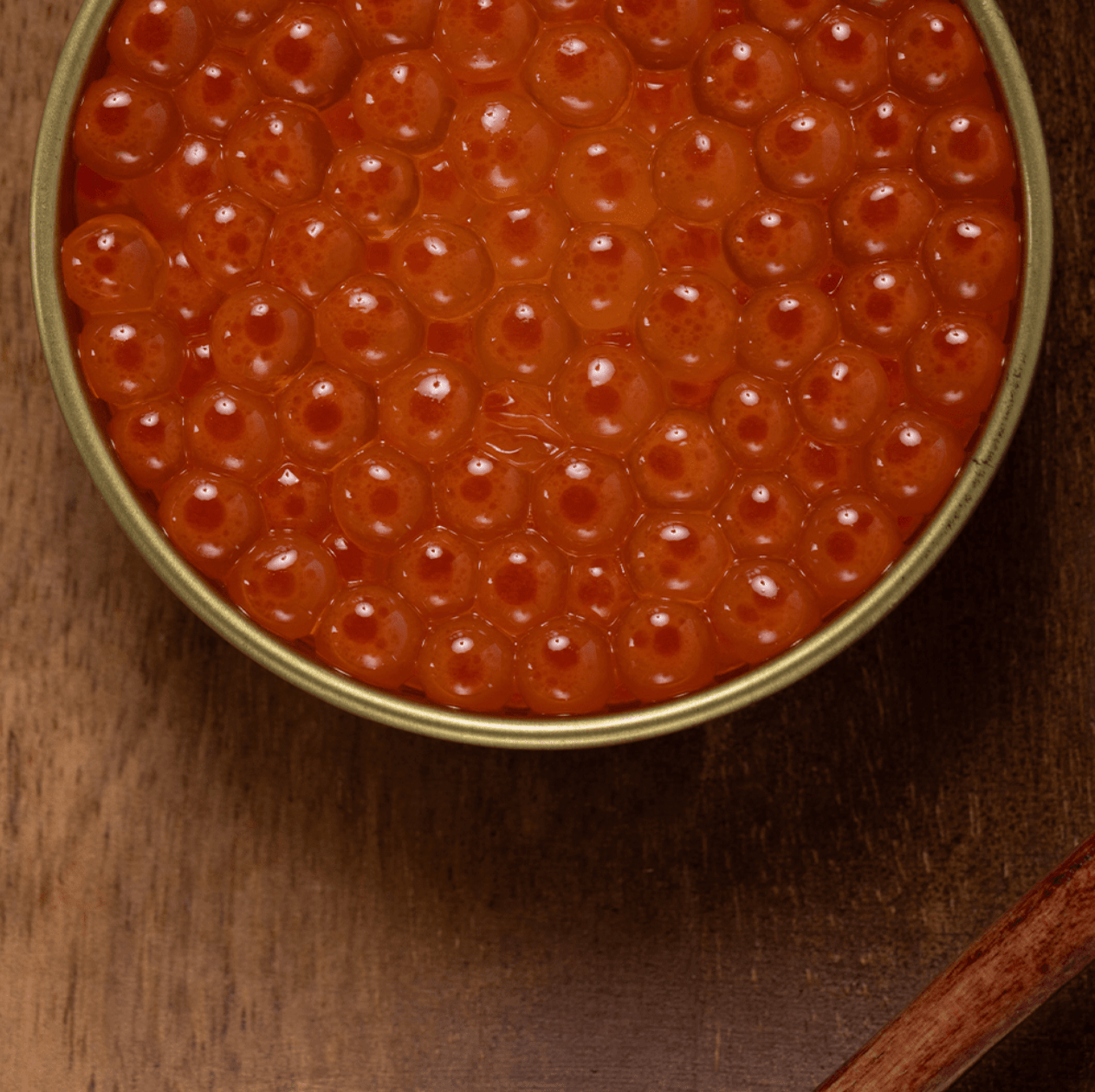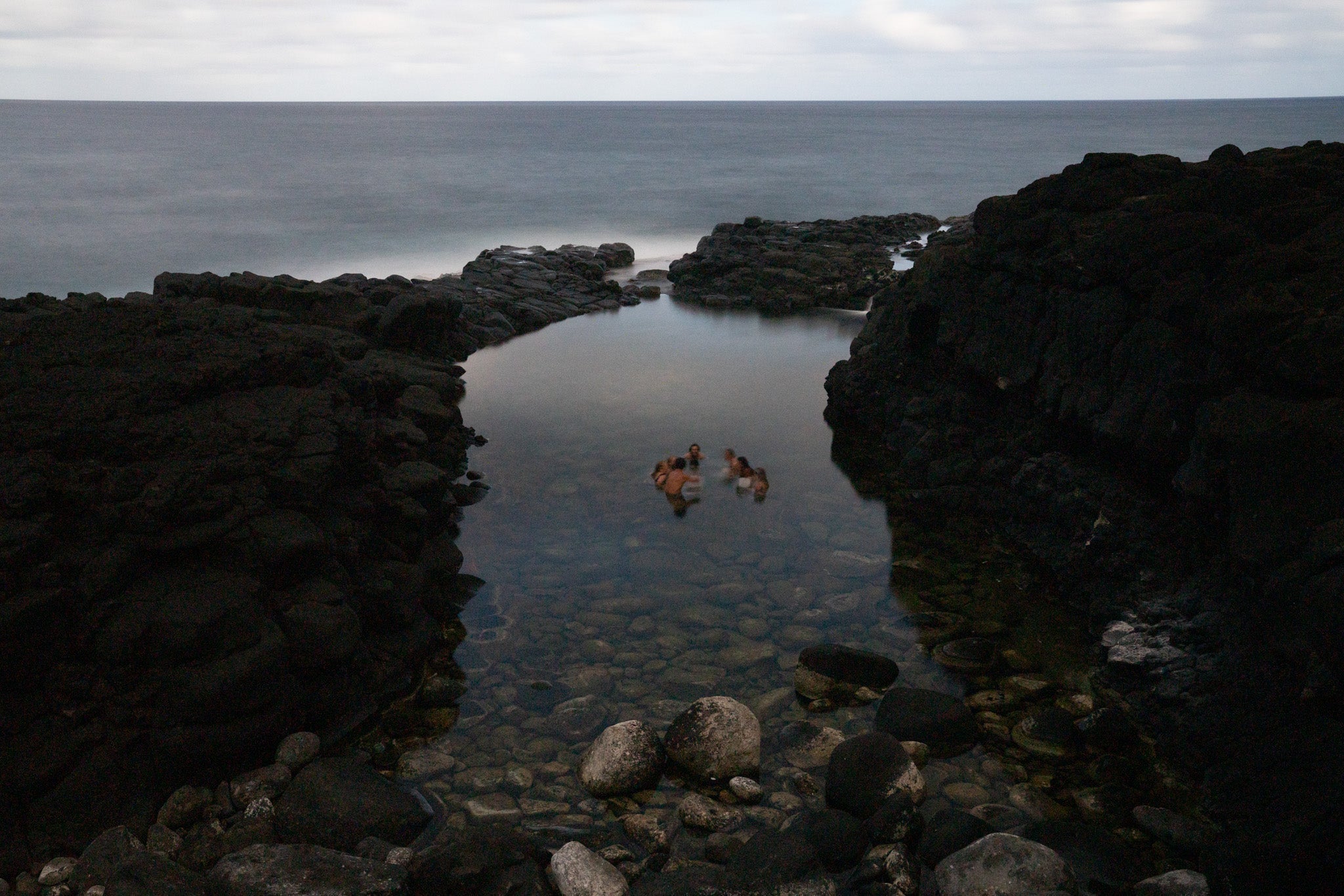The 30-Second Summary
Your body needs EPA and DHA—essential long-chain omega-3s that support brain, eye, and heart health.
Many packaged foods make “omega” claims that are misleading. They usually contain ALA, a short-chain omega-3 from plants that your body converts to EPA at ~10% efficiency and to DHA at just ~1% efficiency.
Seatopia solves the confusion by publishing lab-tested DHA and EPA values per serving—so you always know exactly what your body’s getting.
Just one 4 oz serving of Caleta Bay Steelhead delivers ~420 mg DHA and ~170 mg EPA—a combined ~590 mg of omega-3s, meeting or exceeding most global daily recommendations (WHO/FAO: 250–500 mg EPA+DHA per day).
Why DHA & EPA Matter
Essential fatty acids are crucial for human health, yet our bodies can’t make them—we must source them from our diet.
Among them, DHA and EPA stand apart as marine-derived long-chain omega-3s, originally synthesized by microalgae at the base of the ocean food web. Every fish, shellfish, and marine mammal that thrives on these nutrients ultimately traces them back to the sea.
They’re vital for:
-
🧠 Brain & Eye Development – DHA is a structural fat of neurons and retinas, essential for cognition, vision, and early development.
-
❤️ Cardiovascular Health – EPA helps regulate inflammation, supports circulation, and promotes balanced lipid profiles.
-
🌊 Longevity & Healthy Aging – Together, EPA and DHA give rise to pro-resolving mediators, molecules that aid tissue repair, calm inflammation, and sustain immune balance throughout life.
These marine omegas connect us back to our origins—our brains, hearts, and cells are literally built from the sea.
But Here’s the Problem: Not All Omegas Are the Same
ALA vs. EPA vs. DHA
ALA (alpha-linolenic acid) – Found in chia, flax, and walnuts. A short-chain omega-3 that must be converted into EPA and DHA—an inefficient process that yields only trace amounts.
EPA (eicosapentaenoic acid) – Found in seafood. Anti-inflammatory, supports heart and mood health.
DHA (docosahexaenoic acid) – Found in seafood and microalgae. Critical for pregnancy, childhood development, and brain health across the lifespan.
Conversion reality: Only about 1% of ALA becomes DHA. That means you’d need tablespoons of seeds to match the DHA in just one sashimi plate of Seatopia Steelhead.

Chia vs. Steelhead: The Conversion Problem
-
Chia seeds (2 Tbsp): ~5,000 mg ALA → only ~50 mg DHA (at 1% conversion)
-
Seatopia Steelhead (113 g / 4 oz): ~420 mg DHA directly bioavailable

Why Bioavailability Matters
Not all omega-3s are created equal—what matters isn’t just how much you consume, but how well your body can use it.
-
🐟 Seafood: EPA and DHA are naturally bound in triglyceride form, making them highly bioavailable and easily absorbed.
-
💊 Supplements: Many fish oils are restructured into ethyl esters, which the body absorbs less efficiently.
-
🌱 Seeds & Nuts: Provide ALA, a short-chain omega-3 that must be converted to EPA and DHA—an inefficient and highly variable process (lower in men, and affected by diet and genetics).
When it comes to omega-3s, the source matters as much as the amount.
The Bottom Line
Your family doesn’t just need “omega-3s.” You need EPA and DHA—the long-chain, marine omega-3s that your brain, eyes, and heart truly depend on.
-
ALA from seeds: Great for fiber and gut diversity, but not a reliable source of DHA.
-
Seatopia Steelhead: Sushi-grade, mercury-safe, and tested free of detectable microplastics—delivering pure, bioavailable EPA and DHA in every serving.
The sea produced the molecules that built our ancestors brains and shaped evolution. By choosing seafood that restores the ocean, we complete that circle—feeding both ourselves and the world that sustains us.
Make seafood a ritual.
Plan your week of clean, regenerative meals with Seatopia’s lab-tested, omega-rich, quantifiable EPA & DHA seafood!






